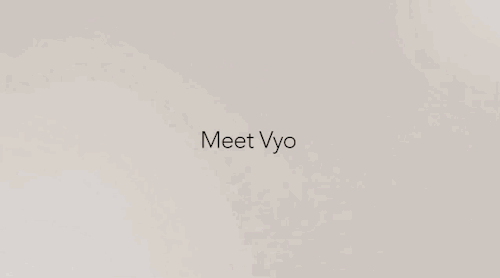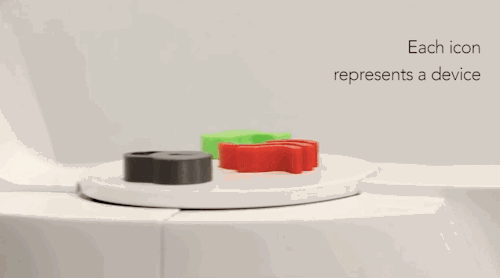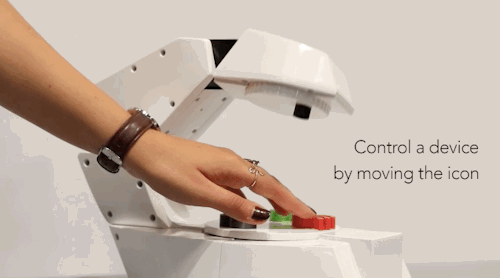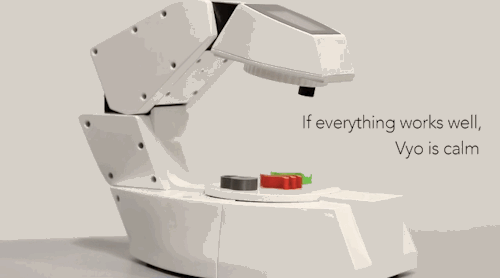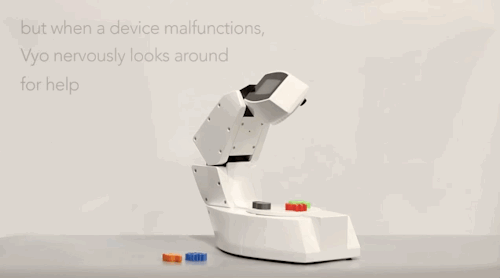Me Thinks There's Something Under The Rockies
Me thinks there's something under the Rockies

Temperatures at a depth of 10 km beneath the contiguous United States
More Posts from Stubborn-turtle-blog and Others
Massive shout-out to the one woman team
Sample Return Robot Challenge
It’s been a long, technical journey for the seven teams competing this week in Level 2 of our Sample Return Robot Challenge. Over the past five years, more than 50 teams have attempted the $1.5 million competition, which is looking to develop autonomous capabilities in robotics. Basically, we want robots that can think and act on their own, so they can travel to far off places – like Mars – and we can rely on them to work on their own when a time delay or unknown conditions could be factors.
This challenge has two levels, both requiring robots to navigate without human control and Earth-based tools (like GPS or magnetic compassing). The robot has to find samples, pick them up and deliver them to home base. Each of the final seven teams succeeded at Level 1, where they had to find one sample, during previous competition years. Now, they have a shot at the much more difficult Level 2, where they have a two-hour window to locate up to 10 samples of varying point values, but they don’t know where to look or what exactly they’re looking for.
Get to know the final seven, and be sure to cheer them on as we live-stream the competition all day Sept. 4 and 5.

West Virginia University Mountaineers Hailing from: Morgantown, West Virginia # of Team Members: 12
Behind the Name: In West Virginia, we call ourselves mountaineers. We like to explore unknown places and be inspired by nature.
Motivation: To challenge ourselves. Through this venture, we are also hoping to create research and career opportunities for everyone on the team.
Strategy: Keeping things simple. Through participating in SRR challenge during the last three years, we have gone a long way in streamlining our system.
Obstacles: One of the biggest challenges was finding and nurturing the talent of individual team members and coordinating the team in making real progress on time.
Prize Plans: We donated 50 percent of our 2015 Level 2 prize money to create an undergraduate “Robotics Achievement Fellowship” at WVU. The rest of the funding was allocated to support team member professional development, such as traveling to conferences. A similar model will be used if we win in 2016.
Extra Credit: We did an Easter egg hunt with our robot, Cataglyphis (named after a desert ant with extraordinary navigation capabilities), last year.

Survey Hailing from: Los Angeles, California # of Team Members: Jascha Little
Behind the Name: It’s short, simple, and what the robot spends a lot of its time doing.
Team History: We work together, and we all thought the challenge sounded like an excellent way to solve the problem of what to do with all our free time.
Motivation: We are all engineers and software developers that already work on robotics projects. Reading too much sci-fi when we were kids probably got us to this point.
Strategy: We are trying to solve the search-and-return problem primarily with computer vision. This is mostly to reduce cost. Our budget can’t handle high quality IMUs or LIDAR.
Prize Plans: Probably build more robots.
Extra Credit: Favorite pop culture robot is Bender (Futurama). Alcoholic robots are the best.

Alabama Astrobotics (The University of Alabama) Hailing from: Tuscaloosa, Alabama # of Team Members: 33
Behind the Name: “Alabama Astrobotics” was chosen to reflect our school affiliation and our mission to design robotics for various space applications.
Team History: Alabama Astrobotics has been involved with other NASA robotics competitions in the past. So, the team is accustomed to the competition environment.
Motivation: We are pleased to have advanced to Level 2 in our first year in the competition (the first team to do so), but we are also not satisfied with just advancing. Our goal is to try to solve Level 2.
Strategy: Our strategy is similar to that used in Level 1. Our Level 1 approach was chosen so that it would translate to Level 2 as well, thus requiring fewer customizations from Level 1 to Level 2.
Obstacles: As a university team, the biggest challenge was not having all our team members available to work on the robot during the time since Level 1 completed in June. Most of my team members have either graduated or have summer internships, which took them away from campus after Level 1. Thus, we didn’t have the manpower to address the additional Level 2 technical challenges.
Prize Plans: Any prize money would be donated to the University of Alabama College of Engineering.
Extra Credit: Alabama Astrobotics also competes in the annual NASA Robotic Mining Competition held at the Kennedy Space Center each May. We have been fortunate enough to win that competition three times in its seven year history, and we are the only team to win it more than once.

MAXed-Out Hailing From: Santa Clara, California # of Team Members: 4
Behind the Name: Several reasons: Team leader is Greg Maxwell, and his school nick name was Max. Our robot’s name is Max, which is one of the most common name for a dog, and it is a retriever. Our efforts on this has been too the max…. i.e. MAXed-Out. Our technology requirements have been pushed to their limits - Maxed-Out.
Team History: Greg Maxwell started a Meet-up “Silicon-Valley Robot Operating System” SV-ROS that was to help teach hobbyists how to use ROS on their robots. We needed a project to help implement and make real what we were teaching. This is the third contest we have participated in.
Motivation: There is still such a long way to go to make robots practical. Every little bit we can contribute makes them a little bit better and smarter. Strategy: Level 1 was a test, as a minimum viable product to prove the tech worked. For Level 2, we had to test and add obstacle avoidance to be able to cover the larger area with trees and slopes, plus add internal guidance to allow for Max to be out of the home base camera tracking system.
Obstacles: Lack of a cost effective robot platform that met all the requirements; we had to build our own. Also time and money. The two months (between Level 1 and 2) went really fast, and we had to abandon lots of cool ideas and focus on the basics.
Prize Plans: Not sure, but pay off the credit cards comes to mind. We might open-source the platform since it works pretty well. Or we will see if it works as expected. We may also take a break / vacation away from robots for a while.
Extra Credit: My nephew, Max Hieges, did our logo, based on the 1960-era Rat Fink sticker.

Mind & Iron Hailing From: Seattle, Washington # of Team Members: 5
Behind the Name: It was the original title for Isaac Asimov’s “I Robot,” and we thought it was a good combination of what a robot actually is – mechanical and brains.
Team History: Three of us were WPI undergrads and met at school; two of us did our master’s degrees at the University of Washington, where we met another member, and then another of us brought on a family member.
Motivation: We saw that there was an opportunity to compete in a challenge that seemed like there was a reasonable solution that we could tackle with a limited budget. We saw three years of competition and thought that we had some better ideas and a pretty good shot at it. Strategy: The samples and the terrain are much more complex in Level 2, and we have to be more careful about our navigation. We are using the same tools, just expanding their capability and scope.
Obstacles: The team being spread over three different time zones has been the biggest challenge. We are all doing this in our free time after work. The internet has been really handy to get things done.
Prize Plans: Probably invest in more robot stuff! And look for other cool projects we can work on, whether it’s another NASA challenge or other projects.
Extra Credit: We are hoping to collaborate with NASA on the professional side with surgical robots to exoskeletons. Challenge-related, our robot is mostly made of plywood – it is a composite fiber material that works well for fast development using cheap materials.

Sirius Hailing From: South Hadley, Massachusetts # of Team Members: 4
Team History: We are a family. Our kids are both robot builders who work for Boston Dynamics, and they have a lot of robot expertise. Both of our kids are robotics engineers, and my wife is intrinsically brilliant, so the combination of that makes for a good team.
Motivation: Because it’s a really hard challenge. It’s one thing to drive a robot with a remote control; it’s another to do the whole thing autonomously. If you make a single change in a robot, it could throw everything off. You have to think through every step for the robot. On a basic level, to learn more about robotics and to win the prize. Strategy: Very similar to Level 1. We approached Level 1 knowing Level 2 was there, so our strategy was no different.
Obstacles: It is very difficult to do object recognition under unpredictable conditions – sun, clouds, weather, sample location. The biggest challenge was trying to recognize known and unknown objects under such a wide variety of environmental possibilities. And the terrain is very different – you don’t know what you’re going to find out there.
Prize Plans: We haven’t really thought about it, but we will give some away, and we’ll invest the rest in our robotics company.
Extra Credit: The first robot we had was called Robo-Dad. Dan was training to be an astronaut in the 1990s, so we built a toy remote-controlled truck that Dan - in Texas - could control via the internet in the house. Robo-Dad had a camera that Dan could see the house with. It had two-way communication; it was a little before it’s time – the internet was very slow.

Team AL Hailing From: Ontario, Canada # of Team Members: 1
Team History: I was looking for competitions that were open, and my dad had followed the Centennial Challenges for a while, so he alerted me to this one. I was already doing rover projects, and it was appropriate and awesome and interesting. I felt like I could do it as a team of one.
Motivation: Difficult challenges. I’m definitely inspired seeing really cool robots that other people are building. New emerging tech really motives me to create new things.
Strategy: I showed up with another robot to Level 2. I built three, but ran with only two. It did make it more complicated, but the strategy was to send them to different areas and have them be able to communicate with each other. Everything physically was the same from Level 1. The idea is that they would all go out with different missions and I would maximize field coverage.
Obstacles: Time. More time would always be nice. Being able to make something like this happen under a timeline is really difficult. I feel like I accomplished a lot for a year. Also, manpower – being a team of 1, I have to do all of the paperwork and other related stuff, but also carry the hardware and do the programming. You have to multitask a lot.
Prize Plans: I’d like to start a robotics company, and be able to expand some of the things I’ve been working on associated with technology and maker education.
Extra Credit: My story is not linear. A lot of people are surprised to hear that my background is in molecular biology and research. I once lived in a tent in Madagascar for a few months to do a biodiversity study, and I have multiple publications from that side of my life. I am in a whole different place now.
The competition is one of many run by our Centennial Challenges program, which looks to the public – citizen inventors, academics, makers, artists, YOU – to help us advance technology and bring a different perspective to obstacles that gets us outside of our traditional solving community. See what else we’re working on here.
Make sure to follow us on Tumblr for your regular dose of space: http://nasa.tumblr.com
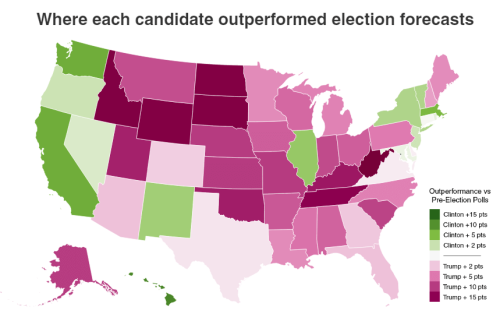
This map shows where the polls got it wrong Purple = Trump received more votes than expected Green = Clinton received more votes than expected Click here for full election results









Casa Sperimentale’ Ruins
Architect: Giuseppe Perugini
Location/Year: Via Porto Azzurro, 57, 00054 Fregane RM (Rome) Italie / 1971
Pictures/Source: Oliver Astrologo + Google / designboom
The Gasoline Station is a proud partner of the Minuscule community network.
Artists + Bloggers + Sponsors = Stronger Together
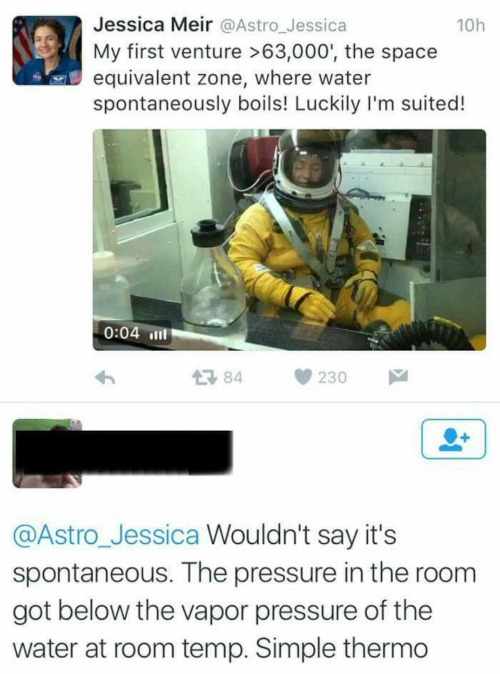
Some guy just mansplained space to an actual fucking astronaut.
The wood siding could age badly unless it's well-treated, but otherwise cool.
Our Most “Liked” Instagram Posts of 2016
Our Instagram page has over 1,800 images and is lucky enough to be followed by more than 18 million fans.
What images and videos were your favorite from this past year? Great question, and one we asked ourselves too!
Here’s a look at our most liked Instagram posts* of 2016…Enjoy!
#10

Colorful “last hurrah’ of a star: The Hubble Space Telescope shows off the colorful “last hurrah” of a star like our sun. The star is ending its life by casting off its outer layers of gas, which formed a cocoon around the star’s remaining core. With 513,672 likes, this image is our 10th most liked of 2016.
#9

Vivid glowing auroras in Jupiter’s atmosphere! Astronomers are using the Hubble Space Telescope to study auroras – stunning light shows in a planet’s atmosphere – on the poles of the largest planet in the solar system. This image ranks #9 for 2016 with 515,339 likes.
#8

Astronomers found evidence for what is likely one of the most extreme pulsars, or rotating neutron stars, ever detected. The source exhibits properties of a highly magnetized neutron star, or magnetar, yet its deduced spin period is thousands of times longer than any pulsar ever observed. With 517,995 likes, this picture ranks #8 for 2016.
#7

Fiery South Atlantic Sunset! An astronaut aboard the International Space Station photographed a sunset that looks like a vast sheet of flame. With Earth’s surface already in darkness, the setting sun, the cloud masses, and the sideways viewing angle make a powerful image of the kind that astronauts use to commemorate their flights. This image ranks #7 for 2016 with 520,553 likes.
#6
Go floating! Join us for a fly-through of the International Space Station! This footage was shot using a fisheye lens for extreme focus and depth of field. This video ranks as our sixth most liked Instagram post of 2016 with 541,418 likes.
#5

This #BlackFriday post helped us celebrate our 4th annual #BlackHoleFriday! Each year we pose awesome content about black holes on the Black Friday shopping holiday. A black hole is a place in space where gravity pulls so much that even light cannot get out. With 549,910 likes, this image ranks #5 for 2016.
#4

A cluster of young stars – about one to two million years old – located about 20,000 light years from Earth. Data in visible light from the Hubble Space Telescope (green and blue) reveal thick clouds where the stars are forming. This image ranks #4 for 2016 with 573,002 likes.
#3

Supermoon is a spectacular sight! The Nov. 14 supermoon was especially “super” because it was the closest full moon to Earth since 1948. We won’t see another supermoon like this until 2034. Which might have something to do with this image ranking #3 for 2016 with 695,343 likes.
#2

Supermoon seen from space! Aboard the International Space Station, NASA astronaut Peggy Whitson posted this image on Dec. 14 captured by European Space Agency astronaut Thomas Pesquet. This stunning image ranks #2 for 2016 with 704,530 likes.
#1

It’s a bird, it’s a plane…no, it’s a #supermoon! The moon, or supermoon, is seen rising behind the Soyuz rocket at the Baikonur Cosmodrome launch pad in Kazakhstan ahead of the November crew launch to the International Space Station. This photo was our #1 image of 2016 with 746,981 likes.
Thanks for joining us as we traveled through the space events of 2016. We’re looking forward to all of the interstellar fun that 2017 will bring. Happy Holidays!
Do you want to get amazing images of Earth from space, see distant galaxies and more on Instagram? Of course you do! Follow us: https://www.instagram.com/nasa/
*Posts and rankings are were taken as of Dec. 21, 2016.
Make sure to follow us on Tumblr for your regular dose of space: http://nasa.tumblr.com

Really? You’re really going to say this?
First off: see this?

This is my masters’ degree in anthropology. I’d show you my BA, but it’s at my parents’ house. I’m three and a half years into a PhD in physical anthropology. I’ve been employed to do physical anthropology at one of the world’s best natural history museums. My area of study? Teeth and diets. I’m not here to argue veganism or vegetarianism, I’m here to tell you, point by point, why you’re devastatingly misinformed about our place in the primate family tree, along with my peer-reviewed sources behind the jump. I know we live in a “post-truth” society so maybe being presented with the overwhelming consensus of the scientists who currently work with this material is meaningless to you, and honestly, this probably isn’t going to make a bit of difference for you, but I can’t let this slide. Not in this house built on blood and honor. And teeth.
1. The evidence for being closely related to chimpanzees is vast and well-understood thanks to advances in DNA analysis. We share a huge amount of DNA with them, and not just repeating patterns in non-coding DNA. We have numerous genes that are identical and likely diverged around 7 million years ago, when Sahelanthropus tschadensis was roaming the earth. S. tschadensis was a woodland species with basal ape and basal human-line traits. The most notable was the positioning of the foramen magnum towards the central base of the skull and not emerging from the back suggests bipedality. This, along with other traits such as small canines worn at the tip, which implies a reduced or absent C/P3 honing complex (the diastema), suggests that this is actually a basal trait and the pronounced diastema we see in other species was a trait that came later. But more on that later- back to chimps and what we mean by sharing DNA. Our chromosomes and chimp chromosomes are structured far more like each other than other mammals. Furthermore, the genes located on these chromosomes are very similar. Chromosome 2, for instance, is nearly identical to two chimpanzee chromosomes. (Chromosome 2 in humans, Neanderthals, and Denisovans is different from Chromosome 2 found in apes and is actually the remnant of an ancient mutation where Chromosome 2 and 3 merged- you can see that from its vestigial centromeres and the genes found on it. We can’t get DNA from fossil material, but Neanderthal and Denisovan subfossils have demonstrated that this reduced chromosome count- we have one fewer pair than apes- is a typical trait of the Homo genus). Here’s a side by side comparison of Human and chimpanzee chromosomes.

Gene coding regions are colored- bands at the same place mean that there’s two identical genes at that locus. Our similarities to lemurs, on the other hand, aren’t on homologous chromosomes. We have similar coding around the centromeres but the genes express themselves differently. The structure of non-ape primate genes is also significantly different; when the first chromosomal comparisons were done between humans and lemurs back in the 1990s, it was discovered that lemurs have much more highly-concentrated heterochromatin at their centromeres, whereas the structure of human and chimpanzee centromeres is similar. The major differences in chimp and human DNA are in the noncoding regions; most of our genes have identical structures.
2. All primates evolved from a lemur-like organism, not just humans. Here’s one of them. I’ve seen her in person. Pretty cool, huh?

Her name is Ida and she’s a member of the genus Darwinius. But that’s just like saying all primates evolved from something that was basically a tree shrew- which is also true. See, one of the main points of evolution is that organisms are continually changing throughout time. We didn’t jump from lemur-like organism to human; changes were slow and gradual and the lineage isn’t really a straight tree. The fossil species we have and know lead to different lines branching out. Some things died off, some things flourished. Heck, look at the Miocene- twelve million years ago, there were hundreds of ape species. Now there’s twenty-three. (Sixteen gibbons, two chimp species, two gorilla species, two orangutan species, and one human species. There’s also some subspecies of gorilla and gibbon, but I’m only counting the primary species.) It’s hard to trace things back, but saying that we evolved from lemur-like species is obtuse and obfuscates the real point, which is that Homo and Pan descended from a relatively recent-in-the-grand-scheme-of-things common ancestor.
3. Our dentition is unique to the extant primates, but not australopithecines. Our teeth look very much like other members of the genus Homo, the extinct ones, as well as many of the australopithecines. We also have very similar enamel proportions to gracile australopithecines; apes have much thinner enamel overall.
But what did australopithecines eat?
Everything. We know they were eating fruits and nuts based on microwear analysis and strontium analysis, but we also know they were eating meat- and in pretty decent quantity, too. We’ve found all kinds of butchering sites dating back millions of years and in association with Australopithecus garhi, the earliest tool user, but we can also see this in tapeworm evolution. There’s many, many species of tapeworm in several genera. But three of them, in the genus Taenia, are only found in humans. And these species diverged from… carnivore tapeworms. Their closest relatives infect African carnivores like hyenas and wild dogs.

Tapeworms that are adapted to the specific gut of their host species need a certain environment, as well as a specific cycle of infection so that it can reproduce. A tapeworm that infects hyenas is going to be less successful if it somehow makes the jump to a horse. But if the hyena tapeworm was able to adapt to our gut, that suggests that our stomach was hospitable enough for them chemically to survive- which brings me to the intestines.
4. Our intestines are also unique. Yes, we have longer intestines than carnivores, but we also don’t have cecums like herbivores. We are omnivores and that means we still needed to retain the ability to digest plants.
The key to being omnivores is omni. All. I’m not saying we should only be eating meat, I’m saying our ancestors ate a varied diet that included all kinds of things. If we weren’t omnivores, why would we have lost the cecum’s function? Why is the human appendix only a reservoir for the lymphatic system, as it is in carnivores? The cecum is an extremely important organ in herbivores, as it houses the bacteria needed to break down cellulose and fully utilize fiber from leaves. But we don’t have that. Instead, we compensate with a long gut. Our ancestors absolutely did eat fruits and nuts and berries, but they also ate other stuff. Like scavenged carcasses and bugs and probably anything they could fit in their mouths. Which- actually, primate mouths are interesting. Humans and chimpanzees have enclosed oral cavities, thick tongues, and jaw angles much more like herbivores than carnivores- suggesting a herbivorous ancestor. That’s not something I’m arguing against at all. But again, we have adaptations for eating meat and processing animal protein because we are an extremely opportunistic species.
5. Our canines are true canines. First, semantics: having a diastema does not canine teeth make. We refer to the canine teeth by position- even herbivores, like horses, have them. They’re the teeth that come right after the incisors. All heterodonts have the potential same basic tooth types- incisors, canines, premolars, molars- in various combinations and arrangements. Some species don’t have one type of teeth, others don’t have any- but it’s silly to say that the canine teeth aren’t canine teeth just because they don’t serve the same function as a gorilla’s or a bear’s or some other animal’s. It’s basic derived versus primitive characteristics.
Now that we’ve got semantics out of the way, let’s talk about that diastema. The lost diastema is a derived trait, which means that our ancestors had it and we lost it over time. All other extant non-Homo primates have a canine diastema. All of them. However, when you look at australopithecines, we see that many of them either don’t have it or have it in a reduced capacity. At the earliest known hominin site, Lukeino, we see Orrorin tugenensis with reduced canines compared to ape fossils and modern apes- and… you do know that apes don’t use their canines for eating meat, right? Like, primate canines serve a very different purpose than carnivorans’ canines. It’s suggested that the large canines are for social display moreso than anything dietary- bigger, more threatening teeth are useful if you’re a gorilla or chimpanzee fighting to the top of your group’s social structure.
I’m going to refer you to a blog post written by Dr. John Hawks, a good friend of my advisor and generally a pretty cool guy. He’s got a nice writeup on the evolution of hominin teeth and how the human line’s teeth have changed through time.
Also, of course our teeth are going to be smaller. When we compare archaic Homo sapiens fossils to modern skeletons, their teeth and jaws are much more robust. This is likely related to the introduction of soft foods- and by soft, I mean cooked grain mush- to the diet around the time of domestication, right before the population explosion that happened about 10k years ago. In general, post-domestication human jaws are much smaller and more crowded than any other humans and hominins that came before.
6: Neanderthals did die out, but not in a catastrophic event like we think of with dinosaurs. While there are no living Neanderthals today that we would classify as Homo neanderthalensis, there is plenty of evidence that we interbred and likely outcompeted them as a species due to our overwhelmingly large population size (hypothesized based on number and locations of remains found). While there’s only a small percentage of Neanderthal mitochondrial DNA lines in human populations today, it’s quite likely we lost a lot of that due to genetic drift and population migration- Neanderthals, after all, had a much more limited range than Homo sapiens sapiens. Their eventual extinction is a mosaic of events- outcompetition plus assimilation. The line between Homo sapiens sapiens and Homo neanderthalensis/Homo sapiens neanderthalensis is blurry- there’s some physical anthropologists who actually think we should be including them within our species as a subspecies- but they are extinct in that the specific subset of hominins with distinct karyotypes and potential phenotypes no longer exists.
And if you don’t know, now you know.
Keep reading
AT-ATs went native...and domestic





Baumraum. Bachstelze. Eberschwang. Austria. photos: Alasdair Jardine
-
 tangologist reblogged this · 6 years ago
tangologist reblogged this · 6 years ago -
 kelseycadaver liked this · 8 years ago
kelseycadaver liked this · 8 years ago -
 realitychemist reblogged this · 8 years ago
realitychemist reblogged this · 8 years ago -
 realitychemist liked this · 8 years ago
realitychemist liked this · 8 years ago -
 nathanielbuildsatesseract reblogged this · 8 years ago
nathanielbuildsatesseract reblogged this · 8 years ago -
 mercurymiscellany liked this · 8 years ago
mercurymiscellany liked this · 8 years ago -
 organicgold reblogged this · 8 years ago
organicgold reblogged this · 8 years ago -
 insidewarp reblogged this · 8 years ago
insidewarp reblogged this · 8 years ago -
 vulpes-aestatis reblogged this · 8 years ago
vulpes-aestatis reblogged this · 8 years ago -
 mo-gets-a-blog reblogged this · 8 years ago
mo-gets-a-blog reblogged this · 8 years ago -
 supernachogirl liked this · 8 years ago
supernachogirl liked this · 8 years ago -
 circuitdesign reblogged this · 8 years ago
circuitdesign reblogged this · 8 years ago -
 idiot1700 reblogged this · 8 years ago
idiot1700 reblogged this · 8 years ago -
 tuffschist reblogged this · 8 years ago
tuffschist reblogged this · 8 years ago -
 anomadicnature reblogged this · 8 years ago
anomadicnature reblogged this · 8 years ago -
 arockmaniac liked this · 8 years ago
arockmaniac liked this · 8 years ago -
 iodovulpes liked this · 8 years ago
iodovulpes liked this · 8 years ago -
 katebusch liked this · 8 years ago
katebusch liked this · 8 years ago -
 missbirdyy liked this · 8 years ago
missbirdyy liked this · 8 years ago -
 shide-no-tori reblogged this · 8 years ago
shide-no-tori reblogged this · 8 years ago -
 shide-no-tori liked this · 8 years ago
shide-no-tori liked this · 8 years ago -
 missmaamlady liked this · 8 years ago
missmaamlady liked this · 8 years ago -
 mirannapanna liked this · 8 years ago
mirannapanna liked this · 8 years ago -
 flaskgarg reblogged this · 8 years ago
flaskgarg reblogged this · 8 years ago -
 raptorchick reblogged this · 8 years ago
raptorchick reblogged this · 8 years ago -
 akaiitoscientist reblogged this · 8 years ago
akaiitoscientist reblogged this · 8 years ago -
 ilusioncaleidoscopica liked this · 8 years ago
ilusioncaleidoscopica liked this · 8 years ago -
 nach0power reblogged this · 8 years ago
nach0power reblogged this · 8 years ago -
 nach0power liked this · 8 years ago
nach0power liked this · 8 years ago -
 ymatter reblogged this · 8 years ago
ymatter reblogged this · 8 years ago -
 inthecrystalhabit reblogged this · 8 years ago
inthecrystalhabit reblogged this · 8 years ago -
 starlight-and-seawater reblogged this · 8 years ago
starlight-and-seawater reblogged this · 8 years ago -
 lnterwebs liked this · 8 years ago
lnterwebs liked this · 8 years ago -
 apastrom reblogged this · 8 years ago
apastrom reblogged this · 8 years ago -
 5000011 reblogged this · 8 years ago
5000011 reblogged this · 8 years ago -
 nasanerd09 reblogged this · 8 years ago
nasanerd09 reblogged this · 8 years ago -
 flowerygraves liked this · 8 years ago
flowerygraves liked this · 8 years ago -
 throughoutthestars reblogged this · 8 years ago
throughoutthestars reblogged this · 8 years ago -
 abonfirein1993 reblogged this · 8 years ago
abonfirein1993 reblogged this · 8 years ago
Gaming, Science, History, Feminism, and all other manners of geekery. Also a lot of dance
243 posts
